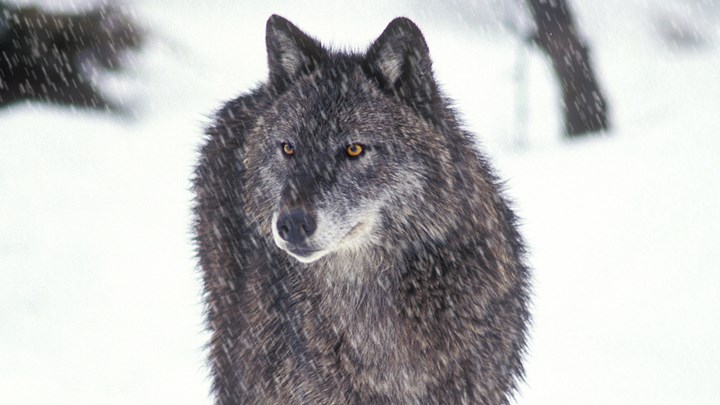
by Brian McCombie - Monday, November 18, 2024

Recently, a number of media outlets have looked at what impact Colorado’s reintroduced gray wolves ultimately may have on that state’s elk herd, currently estimated at some 300,000 animals.
While it’s certain that wolves will kill and eat elk, their primary prey, knowing the larger impact of growing wolf numbers in Colorado is impossible. However, some scientific studies and the experience of hunters and hunting outfitters point to some reasonable—and concerning—possibilities.
Livestock Impacts
A 2020 ballot measure, narrowly approved by voters, required the reintroduction of wolves into Colorado. The first animals in what are today called the “Copper Creek Pack” were set loose in December 2023. Since then, reports indicate that at least three wolf cubs have been born to the original wolves.
For a successful re-intro, the pups are good news. The bad news is that the growing pack has repeatedly attacked and killed area livestock. Not surprisingly, local ranchers want the pack eradicated. However, as CPW spokesperson Travis Duncan told the Associated Press (AP) in September, “We don’t have enough wolves on the landscape to lethally remove” the pack, explaining that officials are avoiding killing the animals because it is “too early in the process of reintroduction.”
As this NRA Hunters’ Leadership Forum website reported, CPW and the U.S. Fish and Wildlife Service opted to capture and relocate the wolf pack and potentially keep some of them in captivity.
Rancher Ted Ritschard lives and works near the ranch in Grand County, Colo., where most of the wolf attacks on livestock have occurred. According to the AP, “He blamed them [the wolves] for killing at least 16 cattle and sheep and wants them in captivity so they don’t kill again.”
“These pups have learned to kill livestock so they’re going to keep doing it,” said Ritschard, who is also president of the Middle Park Stockgrowers Association. “Once they get a taste of sheep or cattle, that’s a whole different world.”
Ritschard noted that local ranchers sought permission earlier in 2024 to kill the wolves, but that permission was denied.
The Ballot Box
CPW actually weighed in against the wolf reintroduction, but Colorado voters overruled the agency by approving Proposition 114 in 2020. The approval was by less than 1% of the total vote. Of course, the vast majority of these voters were from urban and suburban locales and were never going to experience these re-intros firsthand. Of course, the animal rights types who pushed Prop 114 also made the plan sound easy and without any real consequences.
As noted on this NRA Hunters’ Leadership Forum website, the Prop 114 vote “was the first time in history that a state’s authority to decide whether to introduce a species was taken from the state wildlife agency, Colorado Parks & Wildlife, and given to voters who know nothing about science-based wildlife management.”
One would’ve only had to look to Montana to understand that inserting hungry apex predators into a landscape was going to come with substantial drawbacks. In the 1990s, Montana wildlife officials began translocating gray wolves into the state. It didn’t work very well—for ranchers or even the wolves themselves.
A recent article in the Colorado Sun cited a University of Montana study on the Montana wolf relocations that “concluded that more relocated wolves died and survivors often killed livestock in their new locations. Of the 88 translocated wolves in the 2005 study, 58 died after the trapping and moving.”
Once these wolves began killing livestock, officials trapped and moved the adult pack members. In some cases, this meant the younger wolves that were not caught eventually died as they didn’t yet know how to effectively hunt.
An Important Victory
Thankfully, Colorado avoided another ballot box measure to regulate wildlife in the recently defeated Proposition 127 that would’ve banned the hunting of bobcats and mountain lions across the state.
Disturbingly, Prop 127 was on the ballot even though the state’s professional wildlife managers reported Colorado’s mountain lion populations were increasing, with the big cats spotted more frequently in suburban and even urban areas. In some locations, bobcat numbers were on the rise, too.
Abandoning scientific wildlife management in favor of ballot box biology might seem like an exercise in democracy. Yet in reality, this practice voids the North American Model of Wildlife Conservation, which relies on the best available science and research to reach such important decisions. Emotional appeals and catch-phrases can sell ideas, but hard science is wildlife conservation’s best friend.
About the Author
Brian McCombie is a field editor for the NRA’s American Hunter and writes about firearms and gear for the NRA’s Shooting Illustrated. A member of the National Rifle Association and the National Shooting Sports Foundation, Brian enjoys hunting hogs, shooting 1911s, watching the Chicago Bears and relaxing with his two cats.
E-mail your comments/questions about this site to:
[email protected]
